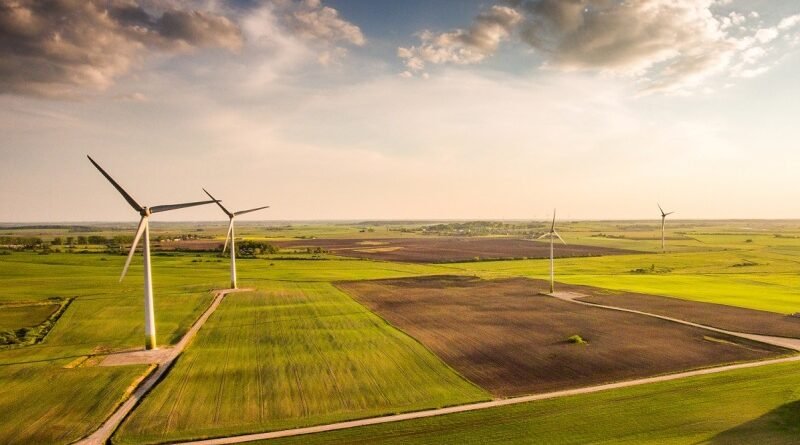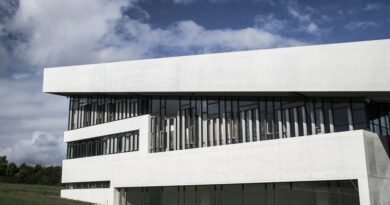Wind farms are becoming more expensive, logistics chains are cracking
Rapidly rising prices of raw materials have not bypass the wind energy sector either. The prices of the power plants rise due to the prices of metals, which account for as much as 90% of wind turbines. However, this is not the only challenge facing wind farm developers: new wind energy projects may be implemented much later than planned due to supply disruptions.
The plans of development of wind energy in Lithuania
Calculating the projects currently under development, the installed capacity of wind farms operating in the country until 2025 should reach 1.8 gigawatts (GW). At the end of the year 2021 it amounted to just 660 megawatts (MW). According to Gediminas Ulozas, CEO of E Energija Group, which develops wind farms in Lithuania, wind farms can currently cost as much as a third more than a few years ago.
“Not only wind turbines are becoming more expensive, but also their construction – in recent years, the prices of components required for wind turbines, such as cables, as well as the installation of foundations, substations and roads have risen. According to a preliminary calculation, a wind farm like the one we started building in 2020 in Telšiai district, it would now cost up to 30 percent more.”
G. Uloza
He is backed by a spokesman for Siemens Gamesa, a wind turbine company, which is currently suffering from a volatile market.
“Wind farms have become more expensive and their prices are likely to continue to rise in the near future. This is a consequence of what is happening in the market: due to a disrupted supply chain, manufacturers are facing higher prices for raw materials and delayed, longer deliveries. In addition, in order to maintain the interest of stakeholders – investors, shareholders – in the renewable energy market, it is necessary to maintain price growth. Without receiving or receiving fewer dividends, they could turn away from renewable energy, which would make it difficult to achieve the goals of energy transformation and the Green deal”
Edwin van der Voort, the company’s regional technical sales manager.
Delays in deliveries
The challenges faced by wind turbine manufacturers are also a concern for wind farm developers – in addition to rising prices, they have to come to terms with the increasing implementation of wind turbine orders.
“We used to receive wind turbines within 12 months, now the deadline is approaching 24 months. We have to wait longer not only for wind turbines, but also for their components – cables and fittings. Due to the stagnant supply, many of the planned wind farms in Lithuania may not be implemented on time”
G. Uloza
According to Justas Kairis, a representative of the International Logistics Center, which performs cargo logistics, the logistics of wind turbines is not easy either – not all ships can transport turbine blades over 60 meters long.
“There are only few cargo ships that can carry wind turbines. Parts of power plants have to be transported from different countries – it is very rare for the entire completed order to be taken from one place. More often, some parts have to be taken from the Netherlands, another from Spain, and a third from Germany. The parts of the wind power plants brought to Lithuania are assembled and stored in accordance with the established procedure, we have a unloading plan for that”.
J. Kairys
Increased freight rates have also affected the logistics of wind farms – the freight rates calculated last year are no longer in line with current prices.
“Freight rates paid to ship managers for cargo transportation in our region grew 2-2.5 times, and during peak times were 3 times higher. Stevedoring and transportation rates also increased. Rising fuel prices have also contributed to the rise in logistics prices. As there are not many ships capable of transporting wind power plants, there is less competition here than in the market of conventional cargo, where transportation rates are more influenced by seasons”
J. Kairys
New taxes may also raise prices
Urtė Daškevičiūtė, director of the Lithuanian Wind Power Association (LVEA), is cautious about the rising tensions in the wind energy sector – renewable energy is more important than ever, but rising electricity prices and logistics challenges may push up electricity prices. However, even if this were the case, renewable power plants would be more economically attractive than fossil fuels.
“The developers of wind farms, who started new projects a few years ago, could not predict such price jumps and changes, so most of the projects not only become significantly more expensive, but their implementation is stalled. Rising costs will inevitably affect renewable energy consumers. Challenges for developers arise both due to the lack of necessary specialists and due to bureaucratic obstacles and the still sometimes unfavorable approach to the development of wind energy, although it is one of the guarantors of Lithuania’s energy independence”
U. Daškevičiūtė
For this reason, the “Breakthrough Package” prepared by the Ministry of Energy and currently being discussed in the parliament is highly anticipated. However, it is still unclear how it will be implemented in practice and how it will affect the parks developed in Lithuania earlier.
The Breakthrough Package is favorable for developers planning new wind farms. Meanwhile, those who have started or even half-finished projects are unsure how to further develop these wind farms – according to the old or new order. It is not known whether the law will finally provide for a clear transition period or whether developers will have to redesign and harmonize what has already been done, such as environmental impact assessments, agreements with local municipalities and communities”
G. Uloza, Head of E Energija Group
The additional production fee planned for the development of wind farm developers provided for in the Breakthrough Package is also being carefully assessed. It would be devoted to local communities, but could also contribute to the increase in electricity prices that will be felt primarily by end-users. According to U. Daškevičiūtė, it is very good for wind power producers to share their success with local communities, but in order to avoid a significant tax increase , other taxes applied to wind energy should be reduced proportionately.
In addition, although additional charges are planned for wind farms, it may happen that some solutions, such as the greater distance from residencial areas to wind farms, will make the development of wind energy more difficult.
“We should substantially promote the development of wind energy by removing bureaucratic barriers and transportation taxes, speeding up the issuance of permits for the construction of wind farms and focusing on increasing the capacity of the country’s electricity grids and developing energy storage. Only by having enough or more electricity than you need can get a lower price that benefits everyone”
says Edwin van der Voort
Source: Idea Prima




